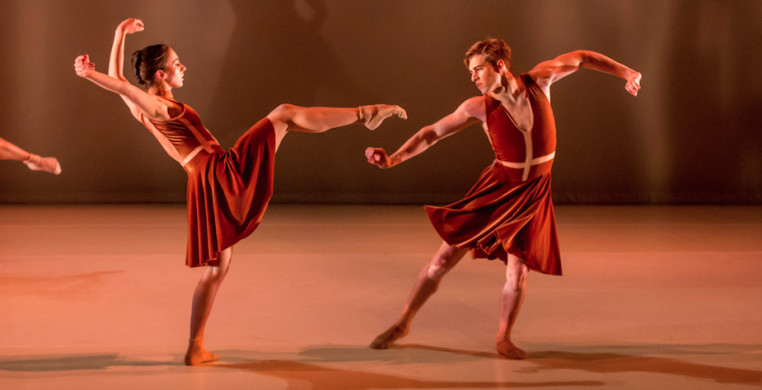By Lynn Shapiro
Don’t be fooled by the blush of youth, in abundance on stage at the Museum of Contemporary Art this past weekend in Joffrey Academy of Dance’s “Winning Works: Choreographers of Color.”
The young dancers of the Academy’s Trainee and Studio Company programs, 42 in all, representing 10 U.S. states and 9 foreign countries, are poised on the cusp of professional careers. Their youthful zeal accompanies impressive precision and unfaltering technical command of their material, with forays into real artistry surfacing here and there.
Three world premieres by the winners of the Choreographers of Color Awards 2015--Jennifer Archibald, Abdul Latif, and Stephanie Martinez--and a new work by Academy Artistic Director Alexei Kemnev, comprised a program of starkly contrasting styles and themes.
The dancers were so light on their feet in Kremnev’s breezy "Windy Sand," you could hardly imagine them making footprints on the imaginary beach where their playful escapades unfolded. Set to a lyrical piano score by Karen LeFrak and performed live by Grace Kim, Windy Sand begins with ten dancers flowing in eye-pleasing patterns across the stage. Kremnev’s choreography showcased the dancers’ classical ballet chops--ladies en pointe, lads partnering them with ease. Classical movement merged seamlessly with contemporary vocabulary that emphasized swift transitions from double tours to floor rolls, ultra crisp entrechat six, partnered pirouettes, and lots of sky-high extensions to unconventional lifts and leaps. The five couples, costumed in dreamy pastel cutout unitards designed by fashion designer B Michael, brought buoyancy and a delightful sense of discovery to this sunny day at the beach.
Elbows thrust forward in ritualistic repetition, and bold, geometric movement gave Jennifer Archibald’s "Our North" a primitive, tribal feel. Costumed in dark red unisex dresses by Gabriel B. Hanson, the four men and six women were alternately warriors, lovers, and tribesmen. Action-reaction in high-intensity interactions characterized both same-sex and male-female partnering, with a push from one catapulting a spin in the other. Startling sissones and jetés en tournants to the pounding of drums and the perpetual motion feel of music by Zoe Keating, Greg Hines, and Odesza, peppered strongly-performed solos, duets, and ensemble segments.
Abdul Latif’s "A Year Ago From Now" brought an element of surrealism to the program, with giant projections of hands making a martini segueing to a woman’s bedroom. Witch-like black-lace-clad phantoms in black point shoes (death?), and a robotic squadron of antiseptic nurses and surgeons in white take her into her own nightmare of an operating room where she is shrouded and wheeled into obscurity. The sometimes elusive symbolism in this piece didn’t obscure some knock-out dancing, sure and theatrically committed.
Stephanie Martinez’s "Non è Normale" began with the sound of electronic interference. Jason Brown’s striking lighting defined three squares of light inhabited by three couples in black socks, grey dresses and slack suits. Mood, movement, and music shifted to Brown’s changing light palette, with a group section to a Spanish-speaking voice, then a raucous pop-song duet with riffs on jitter-bug and swing dance, a highlight of the piece. A space-age beat with mechanical non-expression led to a lyrical balletic segment accompanied by solo violin. The movement ranged from jazzy brisés-volés to spiral attitude turns, body undulations and shoulder squiggles, leaps and long, attenuated lines. The dancers even added their own voices in an energetic finale that never quite earned its abrupt finish.
All told, the young troupe brought the versatility of their excellent training to these “Winning Works” in a refreshing and entertaining program that was a win-win for everyone--dancers, choreographers, and audience alike.

